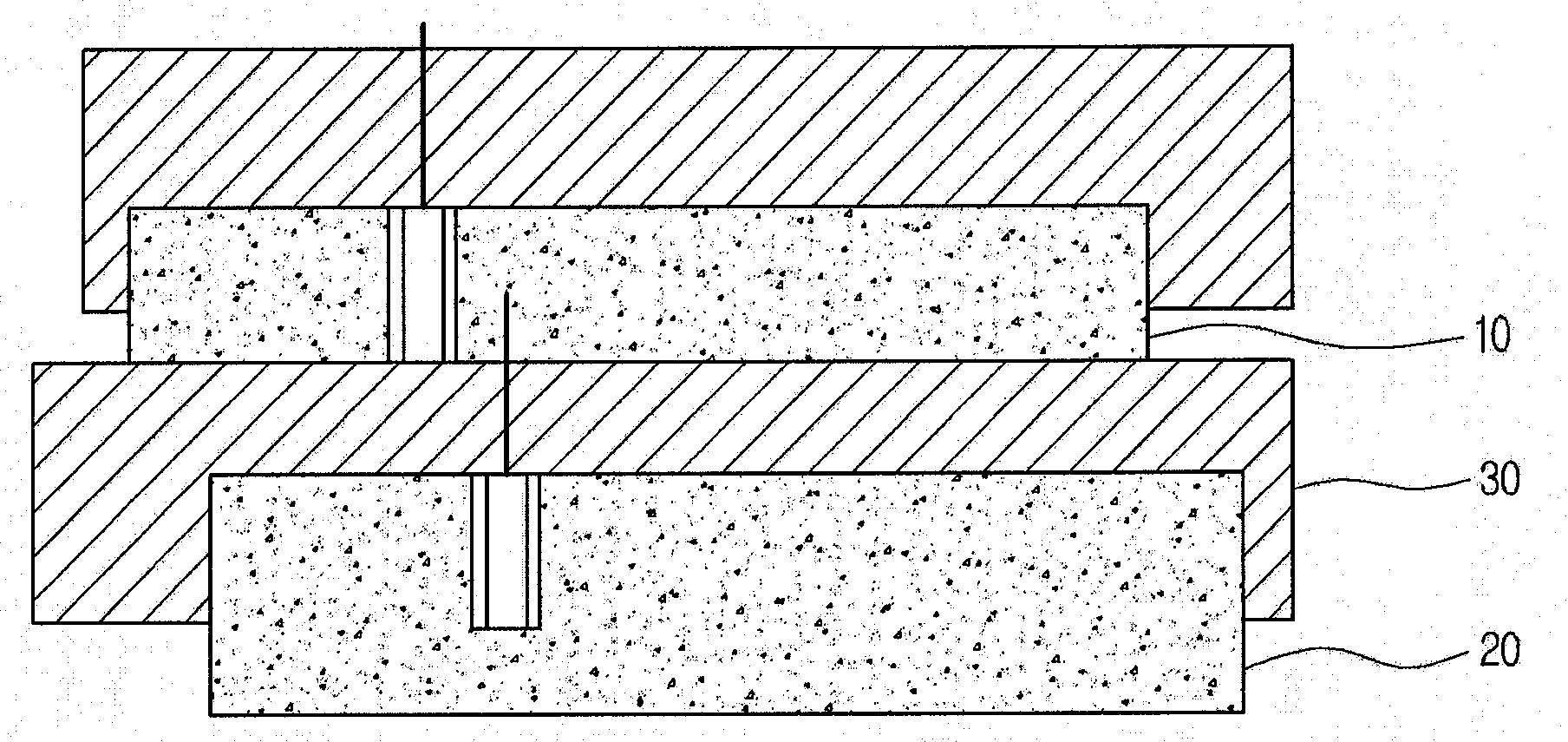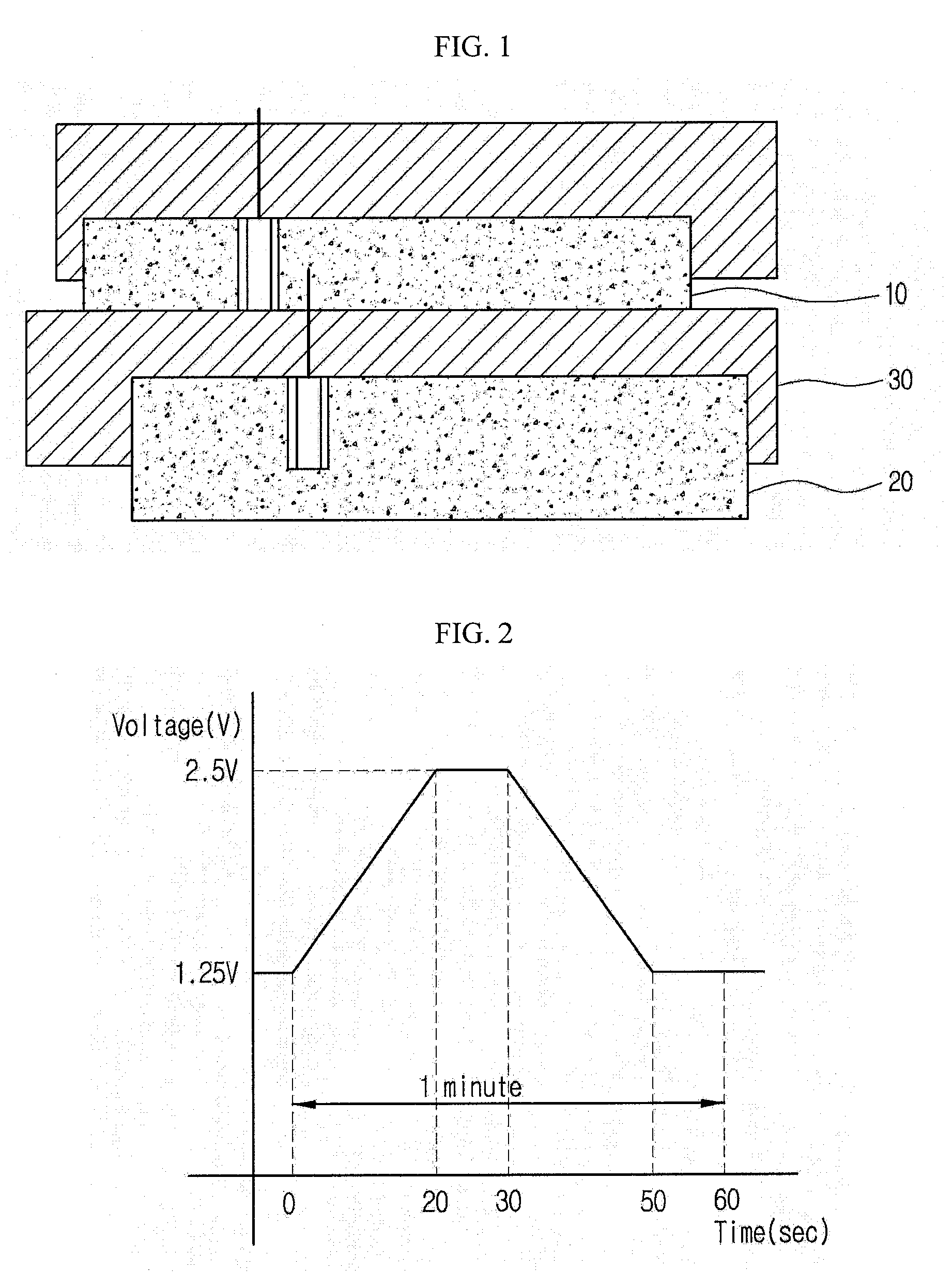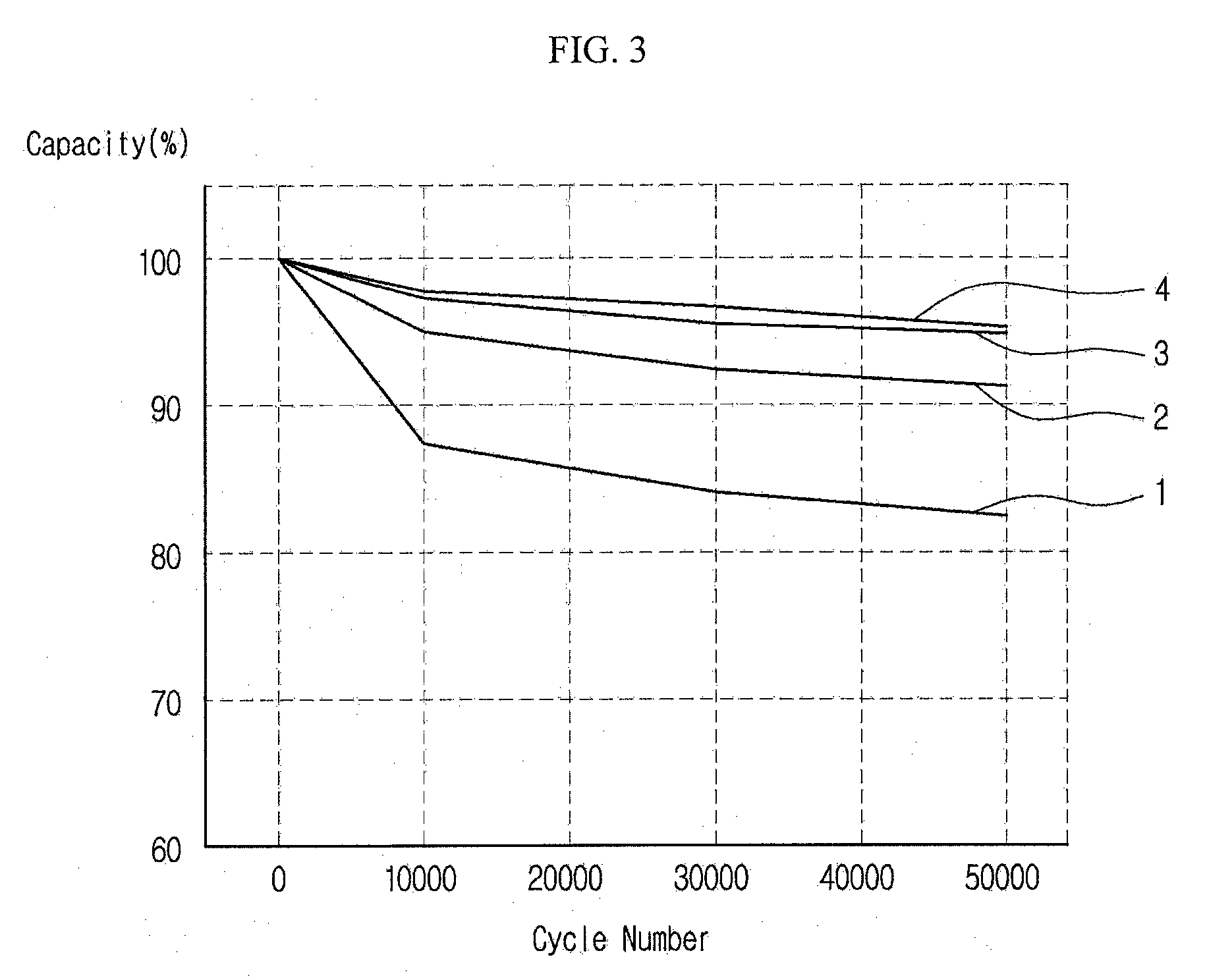Electric Double-Layer Capacitor
a double-layer capacitor and capacitor technology, applied in the direction of capacitors, hybrid capacitor electrolytes, capacitor electrolytes, etc., can solve the problems of electric double-layer formation, propylene carbonate suffers from limitations in the application of propylene carbonate to large-sized products requiring high output and low resistance, and high inflammability
- Summary
- Abstract
- Description
- Claims
- Application Information
AI Technical Summary
Benefits of technology
Problems solved by technology
Method used
Image
Examples
examples
[0056]Hereinafter, an electric double-layer capacitor in accordance with the present invention will be described in more detail with reference to the following examples. These examples are provided only for illustrating the present invention and should not be construed as limiting the scope and spirit of the present invention.
examples 1 through 11
[0057]Using activated carbon (Kansai Cokes, MSP-20) having capacitance of 140 F / g, a specific surface area of 2200 m2 / g and a pore volume of 1.0 cc / g, as an electrode active material and using a slurry containing 80 wt % of activated carbon, 12 wt % of carbon black (Super-P), 3 wt % of carboxymethylcellulose (CMC), and 5 wt % of a polytetrafluoroethylene (PTFE) binder, thin films were coated with the same thickness on both sides of aluminum foil having a thickness of 20 μm, thereby fabricating electrodes having a thickness of 200 μm. The electrodes were cut into a size of 3 cm×40 cm, wound into a cylindrical form and then placed into metal cases having a size of D18 mm×L40 mm, thereby fabricating cells.
[0058]For Examples 1 through 11, total moles of electrolytes contained in the thus-fabricated cells were sequentially increased from 1M up to 2M, a mixed amount of tetraethylammonium tetrafluoroborate (TEABF4) and butylmethylpyrrolidinium tetrafluoroborate (BMPBF4) salts was adjusted,...
example 12
[0071]A cell was fabricated in the same manner as in Example 9, except that 1.5M ethylmethylpyrrolidinium tetrafluoroborate (EMPBF4) was used as a salt, instead of butylmethylpyrrolidinium tetrafluoroborate.
PUM
 Login to View More
Login to View More Abstract
Description
Claims
Application Information
 Login to View More
Login to View More - R&D
- Intellectual Property
- Life Sciences
- Materials
- Tech Scout
- Unparalleled Data Quality
- Higher Quality Content
- 60% Fewer Hallucinations
Browse by: Latest US Patents, China's latest patents, Technical Efficacy Thesaurus, Application Domain, Technology Topic, Popular Technical Reports.
© 2025 PatSnap. All rights reserved.Legal|Privacy policy|Modern Slavery Act Transparency Statement|Sitemap|About US| Contact US: help@patsnap.com



